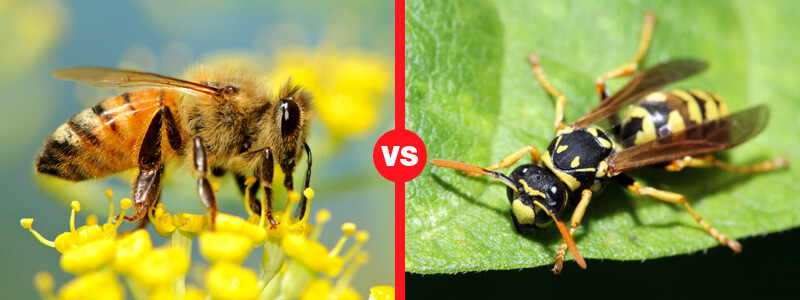
Wasps and bees come in many types and sizes. While these pests are often similar looking in size, they are quite different. Wasps and Honey bees are often seen as a benefit to the environment by providing a great source of organic pest control in gardens, farms, and crops. Though they are great for the environment, they can be potentially harmful to humans and animals.
Bee and wasp stings can cause significant reactions, ranging from pain that is localized to serious or potentially fatal conditions. In order to keep your family healthy and safe from potential stings, it is important to know everything you can about bees and wasps and how to handle their presence.
What is the Difference Between Wasps and Bees?
Wasps and bees are often mistaken for one another since both are capable of delivering painful stings. Identifying the difference between wasps and bees is important when it comes to treating stings and identifying infestations in your home or yard. Bees measure around 2.5cm long with hairy bodies while wasps vary in size but have smooth and shiny skin. Most bee colonies can have populations close to 100,000 while wasps have smaller colonies.
What Are the Most Common Bees & Wasps Found in Canada?
How to Treat Stings from Bees and Wasps
If you have been stung by a bee or a wasp, unless you are allergic, there are a few steps you can take at home before seeking medical treatment. Remove the stinger with tweezers or scrape it away using your fingernail – do not pinch the stinger as this can inject more venom. Control swelling to the area by icing it down. If you were stung on your arm or leg, elevate it. For pain, take an over-the-counter painkiller such as ibuprofen. If you’re feeling itchy apply a mixture of baking soda and water or a calamine lotion. Seek emergency care if you’re experiencing shortness of breath, tightness of the throat, abdominal pain, fast heartbeat, or loss of consciousness.
What if I have Wasps or Bee Nests in My Yard?
For more information about bees and wasps in Canada you can visit our website at www.trulynolen.ca.